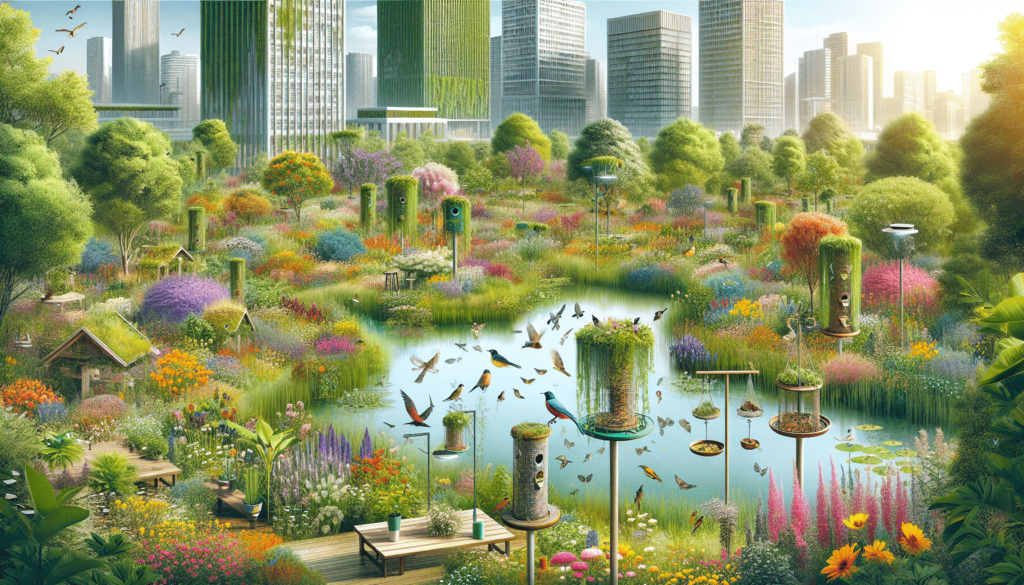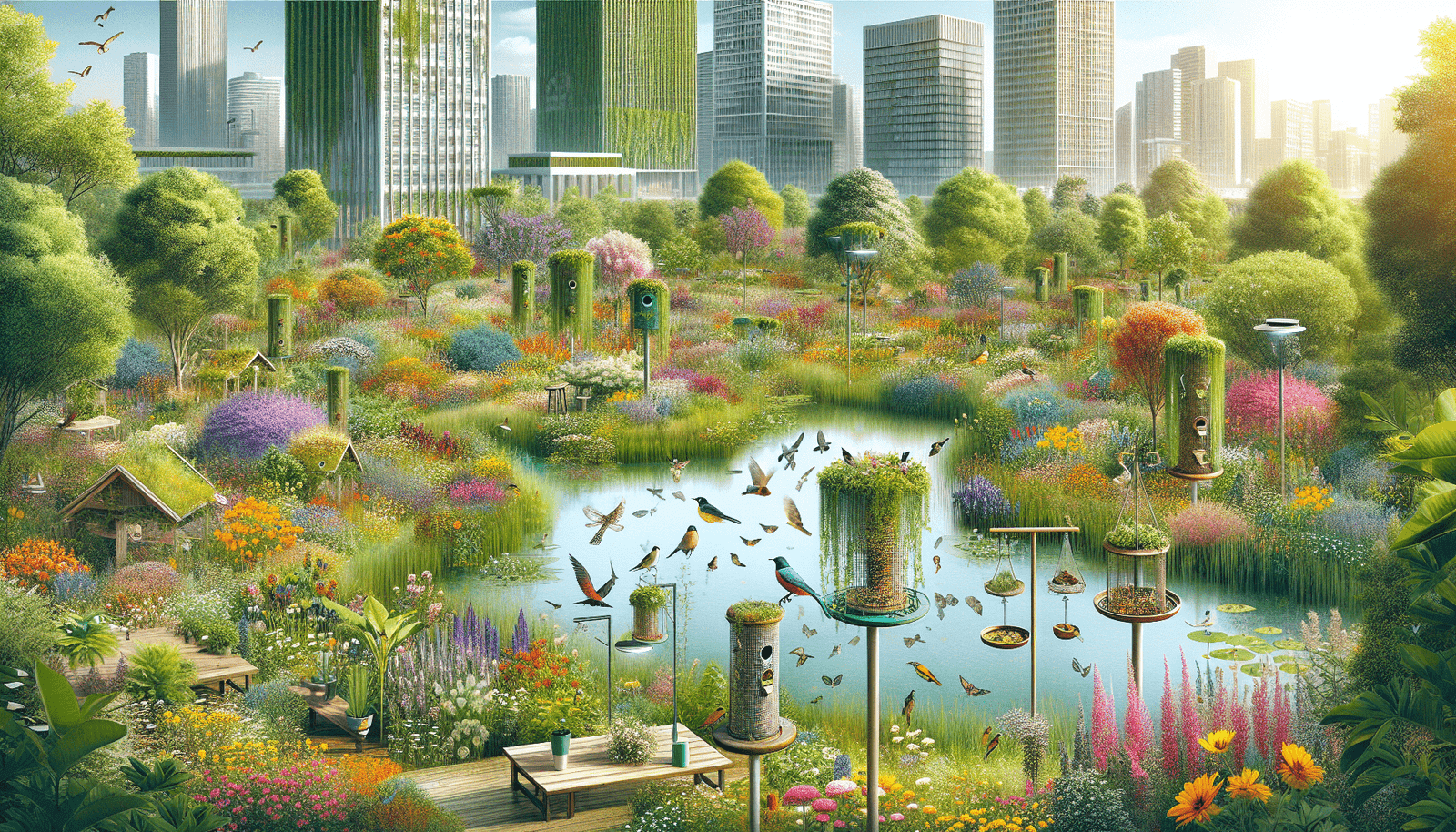How To Create A Wildlife-Friendly Garden In The City
Have you ever dreamed of creating a wildlife-friendly garden in the heart of the city? Imagine attracting butterflies, bees, birds, and other fascinating creatures right to your backyard. In this article, we will discuss how you can transform your urban garden into a haven for wildlife.
Importance of Wildlife-Friendly Gardens
Creating a wildlife-friendly garden in the city is not just about providing a beautiful and serene environment for yourself. It also plays a vital role in the ecosystem and conservation efforts. By integrating wildlife-friendly practices into your garden, you can help support local biodiversity, protect endangered species, and contribute to the overall health of the environment.
Providing Habitat for Wildlife
One of the key aspects of a wildlife-friendly garden is providing suitable habitat for various wildlife species. Urban areas often lack natural habitats for wildlife, making urban gardens crucial for providing shelter, food, and breeding grounds for animals. By incorporating native plants, trees, shrubs, and other elements, you can create a diverse habitat that supports a wide range of wildlife species.
Supporting Biodiversity
Biodiversity is essential for maintaining a healthy and resilient ecosystem. By creating a wildlife-friendly garden, you can help support biodiversity by providing a variety of food sources, shelter, and breeding opportunities for different species. This, in turn, can attract a diverse range of wildlife to your garden, creating a vibrant and thriving ecosystem right in the heart of the city.
Tips for Creating a Wildlife-Friendly Garden
Now that you understand the importance of wildlife-friendly gardens, let’s dive into some practical tips on how to create one in your urban space. From choosing the right plants to providing essential resources for wildlife, these tips will help you transform your garden into a haven for nature’s creatures.
Choose Native Plants
When selecting plants for your wildlife-friendly garden, it’s essential to choose native species that are well-suited to your local climate and soil conditions. Native plants provide food and shelter for native wildlife species, making them an integral part of a wildlife-friendly garden. By incorporating a diverse selection of native plants, you can attract a wide range of butterflies, bees, birds, and other wildlife to your garden.
Create Diverse Plant Communities
To maximize the benefits of your wildlife-friendly garden, aim to create diverse plant communities that mimic natural ecosystems. By planting a variety of trees, shrubs, flowers, and grasses, you can provide different layers of vegetation that offer food and shelter for a range of wildlife species. Consider incorporating plants with different bloom times to ensure a consistent food source for pollinators throughout the year.
Provide Water Sources
Water is essential for wildlife survival, especially in urban areas where natural water sources may be scarce. By incorporating water features such as birdbaths, ponds, or shallow bowls, you can provide essential drinking and bathing opportunities for birds, butterflies, and other wildlife. Be sure to clean and refill water sources regularly to prevent the spread of diseases and maintain a healthy environment for wildlife.
Avoid Chemical Pesticides and Herbicides
Chemical pesticides and herbicides can be harmful to wildlife, pollinators, and the environment. Instead of relying on these chemicals to manage pests and weeds in your garden, consider using natural and organic methods such as companion planting, hand removal, or biological controls. By avoiding chemical pesticides and herbicides, you can create a safe and healthy environment for wildlife while promoting sustainable gardening practices.

Attracting Wildlife to Your Garden
Now that you have set the foundation for a wildlife-friendly garden, it’s time to attract wildlife and make your garden a welcoming habitat for various species. From creating nesting sites to providing food sources, here are some tips on how to attract butterflies, bees, birds, and other wildlife to your urban garden.
Plant Pollinator-Friendly Flowers
Pollinators such as bees, butterflies, and hummingbirds play a crucial role in the ecosystem by pollinating flowers and crops. To attract these important pollinators to your garden, consider planting a variety of nectar-rich flowers with bright colors and unique shapes. Native wildflowers such as black-eyed Susans, milkweed, and bee balm are excellent choices for attracting pollinators and adding beauty to your garden.
Provide Nesting Sites
Many wildlife species require specific nesting sites to raise their young successfully. By incorporating nest boxes, bat houses, birdhouses, and bee hotels into your garden, you can provide safe and secure nesting opportunities for various species. Be sure to place nesting sites in suitable locations away from predators and disturbances to maximize their effectiveness.
Offer Food Sources
Food sources play a significant role in attracting wildlife to your garden and keeping them coming back for more. Consider planting fruit-bearing trees, shrubs, and plants that provide food for birds, squirrels, and other wildlife. Additionally, you can install bird feeders, hummingbird feeders, and butterfly feeders to supplement natural food sources and attract a diverse range of wildlife species to your garden.
Create Wildlife Corridors
Wildlife corridors are essential for connecting fragmented habitats in urban areas and allowing wildlife to move freely between different green spaces. By planting hedgerows, wildflower meadows, and other natural features, you can create wildlife corridors that provide safe passage for animals through your garden. Wildlife corridors also help increase the overall biodiversity of your garden by enabling different species to interact and thrive in the urban environment.
Maintaining Your Wildlife-Friendly Garden
Maintaining a wildlife-friendly garden requires ongoing care and attention to ensure that it remains a healthy and hospitable habitat for wildlife. From managing invasive species to providing supplemental resources, here are some essential tips for maintaining your wildlife-friendly garden in the city.
Manage Invasive Species
Invasive plant species can outcompete native plants, disrupt natural ecosystems, and reduce biodiversity in your garden. To prevent invasive species from taking over your wildlife-friendly garden, regularly monitor your plants for signs of invasiveness and take proactive measures to control and remove invasive species. Consider replacing invasive plants with native alternatives that are better suited to your local environment and support native wildlife.
Provide Supplemental Resources
Supplemental resources such as nesting materials, water, and food can help support wildlife in your garden, especially during times of scarcity. Consider providing nesting materials such as twigs, leaves, and grass for birds and other wildlife to use in building their nests. Additionally, you can offer supplemental food sources such as birdseed, suet, and mealworms to attract and support wildlife throughout the year.
Support Wildlife Conservation Efforts
In addition to creating a wildlife-friendly garden in the city, you can further support wildlife conservation efforts by participating in local conservation programs, volunteering with environmental organizations, and advocating for wildlife-friendly practices in your community. By working together with others to protect wildlife and their habitats, you can make a meaningful difference in the conservation of local biodiversity and the overall health of the environment.

Conclusion
Creating a wildlife-friendly garden in the city is a rewarding and fulfilling experience that allows you to connect with nature, support local biodiversity, and contribute to wildlife conservation efforts. By following the tips and recommendations outlined in this article, you can transform your urban garden into a haven for wildlife and enjoy the beauty and wonder of nature right outside your doorstep. Start small, experiment with different techniques, and watch as your wildlife-friendly garden thrives and attracts a diverse range of fascinating creatures. Happy gardening!

